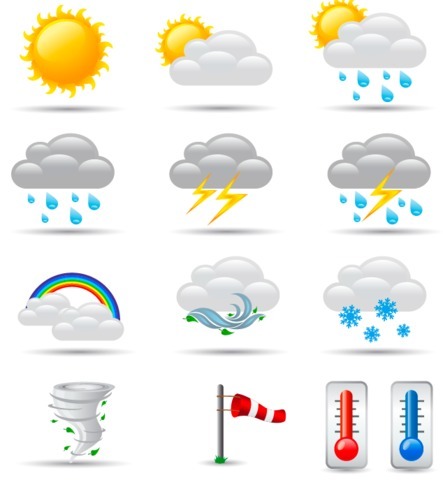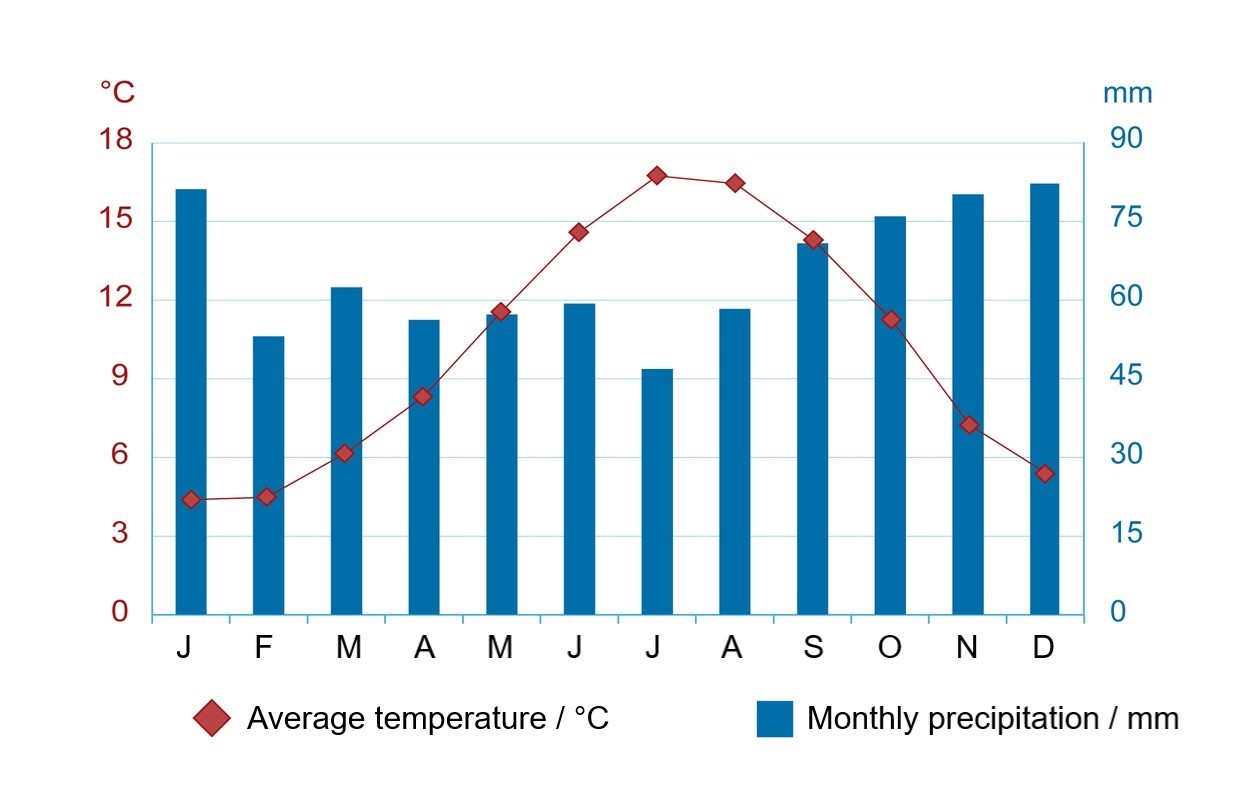8.1 Climate elements
 Weather changes daily, but the climate stays the same. Weather is a term that describes temporary climatic conditions, whereas climate is used to describe the long-term climatic conditions.
Weather changes daily, but the climate stays the same. Weather is a term that describes temporary climatic conditions, whereas climate is used to describe the long-term climatic conditions. When creating a climate diagram, we take the average temperatures and total amount of rainfall from each month over a sample size of 30 years. Because of the large sample size, temporary weather conditions do not have large effects on the climate diagram of a certain area. However, it can sometimes be difficult to differentiate between whether a phenomenon is a part of the weather or the climate. For example, the El Niño phenomenon can be regarded as belonging to both.
The climate of a certain region is influenced by its location relative to the Earth's equator or its latitude, its elevation and its distance from the nearest sea or ocean, as well as by the ocean currents that bring air and rainfall to the region.
The climate elements that comprise the climate of a region are the air temperature, the amount of rainfall or precipitation, the wind speed and direction, as well as the relative humidity of the air. Because atmospheric rotation causes the formation of low-pressure areas and storms to change yearly, they also have an influence on the weather and climate of a region.
| Factor | Unit |
|---|---|
| temperature | The most common unit of temperature is degrees Celsius (°C ). |
| precipitation | Precipitation or rainfall is measured in millimeters (mm) |
| wind | Wind speed is measured in meters per second (m/s). Wind direction describes the direction from which the wind arrives. |
| humidity | Relative humidity is a percentage that describes the amount of water vapor in the atmosphere compared to the maximum amount possible. Absolute humidity describes how many grams of water vapor is contained in a square meter of air. The unit of absolute humidity is gram per square meter. |
Places like the British Isles, Iceland and Norway have a maritime climate, where the winters are temperate and the summers are cool. Denmark also has this kind of a climate, which changes into a more continental climate when moving towards Fennoscandia.
 A climate diagram from London. The climate is maritime: the winters are not cold, the summer is not hot, and plenty of rainfall is experienced each month.
A climate diagram from London. The climate is maritime: the winters are not cold, the summer is not hot, and plenty of rainfall is experienced each month.